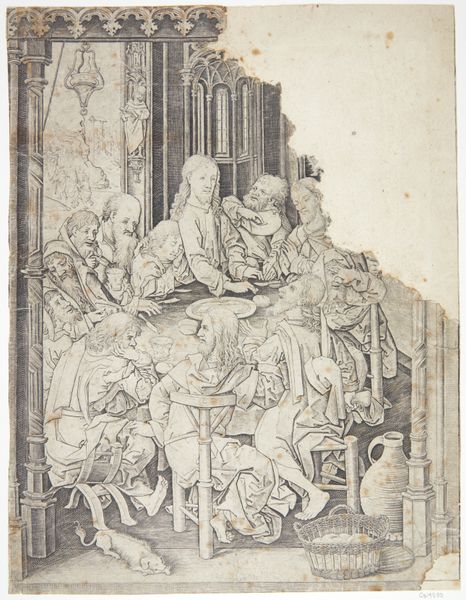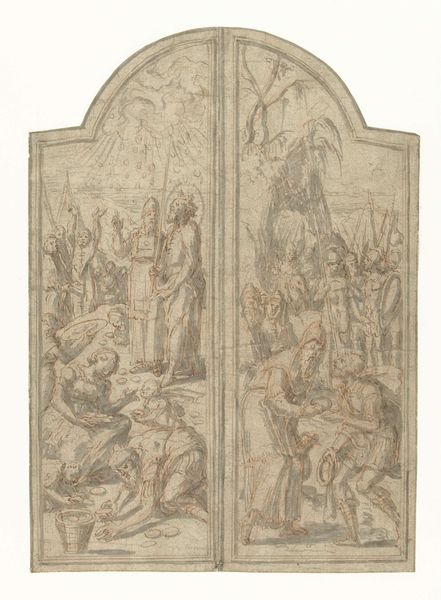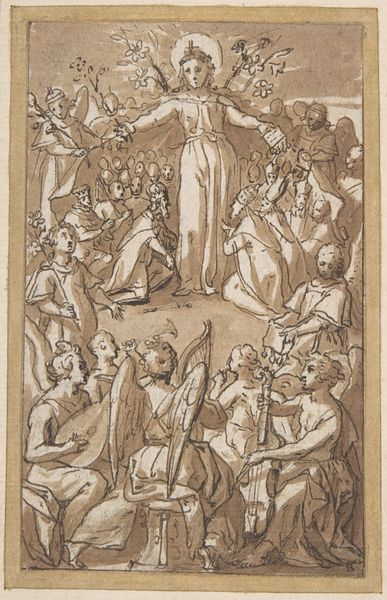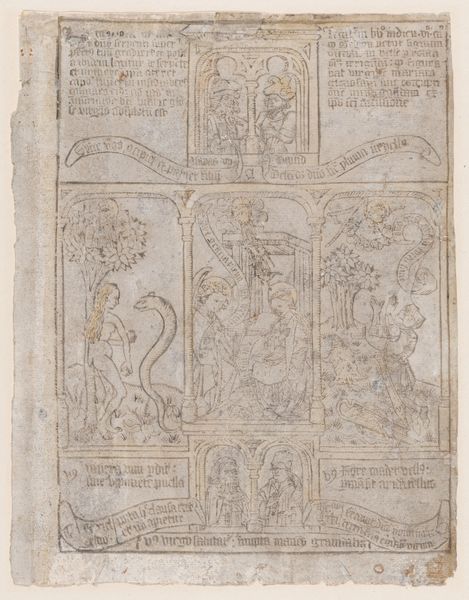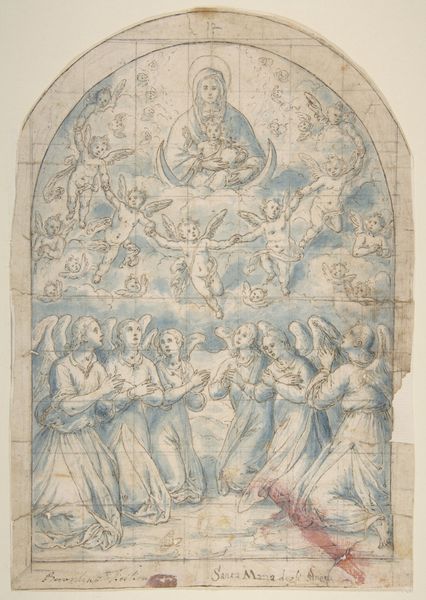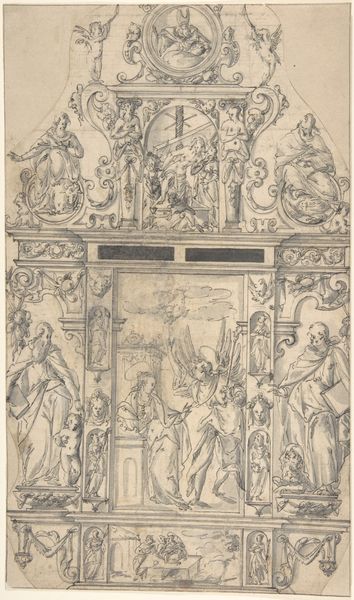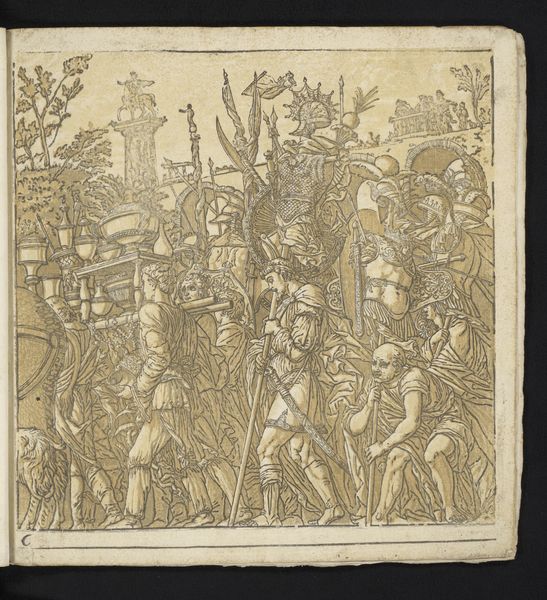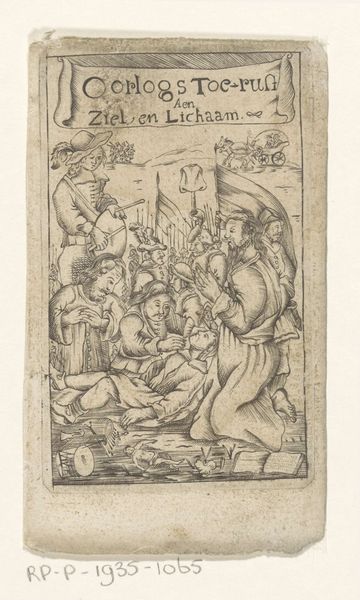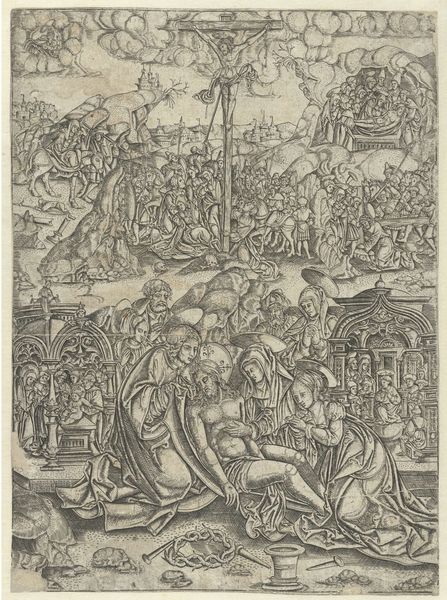
drawing, print, etching
#
portrait
#
drawing
#
medieval
#
narrative-art
# print
#
etching
#
figuration
#
line
#
crucifixion
#
history-painting
Dimensions: Sheet (Trimmed): 3 3/16 × 2 1/2 in. (8.1 × 6.3 cm)
Copyright: Public Domain
Editor: Here we have an etching called "Crucifixion," created sometime between 1450 and 1475 by an anonymous artist. It depicts quite a scene. The composition feels so packed with figures. What draws your eye first in this print? Curator: Immediately, the linearity strikes me. The artist utilizes line, purely, to create form and depth, but does so in a way that rejects pure naturalism. Look how the figures are built from tightly woven strokes to create tonal variation, even the architecture is subject to this construction. This speaks to a desire to embrace detail without succumbing to painterly illusion. Editor: That’s interesting. I hadn’t thought about how the medium dictates the form. So, it's not just what is depicted but how it is depicted. Curator: Precisely. Consider the overall composition. The rounded arch containing the scene acts as a compositional device, guiding our eye, reinforcing the artificiality and the deliberate crafting of the picture plane. The use of line throughout the work also gives it a stylized character that would not occur with broader strokes or application of paint. Notice that even with the apparent chaos in the crowd of figures, a sort of organization presents itself. What do you make of that? Editor: Well, the lines of sight, implied or direct, guide my eye upward to the crucifixes. Despite all the chaos, the event on the crosses takes precedence. I also observe that each character is given almost equal weight through this linearity, which somehow makes the print feel flat. Curator: And it is precisely this tension between detail and flattening, between representation and artifice, that makes the work so compelling, isn’t it? Editor: Yes, I see it now! I thought it was chaotic, but now I understand how its visual elements and technical execution contribute to a powerful artistic statement.
Comments
No comments
Be the first to comment and join the conversation on the ultimate creative platform.

